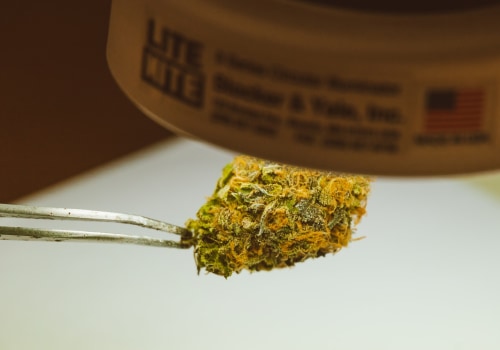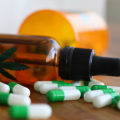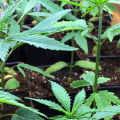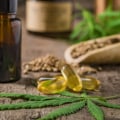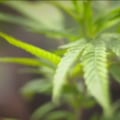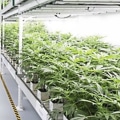Use of medical cannabis products is experimental Side effects are very common. Common side effects include dizziness, fatigue, dry mouth, lightheadedness, drowsiness, and nausea. Side effects are usually mild to moderate in intensity and usually resolve quickly, but sometimes serious side effects occur. When taken in large doses, medical marijuana can cause paranoia or anxiety.
However, if a patient has paranoia or anxiety once while using marijuana, that doesn't mean they will always. The current life situation and mindset can affect this side effect, along with the strain and dose of the marijuana product used. Ever since using medical marijuana, have you ever lost your train of thought in the middle of the sentence? If so, you've had this side effect. While short-term memory loss disappears as marijuana wears off, it can be an annoying side effect for you and the people you interact with.
To minimize short-term memory loss, try taking B vitamins and omega-3 fatty acids. While medical marijuana fights insomnia, some strains can make falling asleep and staying asleep nearly impossible. If you're struggling with insomnia as a side effect of marijuana, try to avoid energizing Sativa strains. Opt for an Indica strain closer to bedtime to help promote sleep.
Terpenes also play an important role, so look for products with higher amounts of relaxing terpenes, such as beta-myrcene Sleepiness and fatigue are two common side effects of medical marijuana. To avoid adverse effects, do not operate machinery or perform hazardous activities while using medical marijuana. It's important not to drink alcohol while taking medical marijuana, as it can increase sleepiness. As you continue to use medical marijuana, your body will naturally develop tolerance.
Low doses of medical marijuana may become ineffective with prolonged use. That's why we recommend starting small and going slow to get the most out of each dose of marijuana. It takes a relatively long time for the body to generate tolerance to medical marijuana, but it can happen. The best way to avoid tolerance buildup is to switch between Indica and Sativa strains.
Easily discover what and how medical marijuana can help you or a family member. Participate in cannabis research so that together we can increase access to cannabis. Find out how cannabis can help people live better Medical marijuana, like any other medication, can have side effects. Side effects, such as not feeling pain and being able to eat and sleep properly, are positive.
However, other side effects are not as desirable. Here are some of the most common side effects of medical marijuana. The side effects of THC are usually the most obvious, not surprisingly, as it is the prominent psychoactive cannabinoid found in cannabis. At low doses of about 3 milligrams (mg) or less, THC may have little or no psychoactive effect, although there may be a slight feeling of euphoria.
Some people start with a dose of around 3 mg-5 mg of THC when using edibles or tinctures, where there may be some euphoric and relaxing effect, but at a manageable level. Another method is to use delta-8 THC, which is not as psychoactive as delta-9 THC and is still a natural cannabinoid. Psychotic episodes are likely to occur only in those who are already predisposed to conditions where psychosis may be a problem (e.g. For children and teens, exposure to high amounts of THC on a regular basis can have some long-term effects on memory, mood, and behavior, since the brain is still developing.
However, for people 25 and older, the long-term effects of THC are not known (as is the case with many medications). In fact, there can even be neurogenic effects when older people consume small doses of THC. Negative effects on IQ and memory generally occur when the user is young. Longitudinal studies have demonstrated few long-term effects on executive functioning.
Eating cannabis also tends to have longer lasting and stronger effects than other methods of ingestion. While vaping, inhaling, or smoking small amounts of THC may provide a more immediate effect, they are not necessarily the healthiest methods of ingestion. Tinctures, topicals, transdermal patches, inhalers, suppositories, and all methods of ingestion associated with common ways of taking medications can often provide a more controlled release of THC; but, with some exceptions, finding a company that produces a properly standardized product that release a dose in each application is difficult. However, while CBD can reduce the anxiety-inducing properties of THC, in small doses and in combination with THC, it can prolong the effects of THC to a certain extent and, at the same time, diminish its more paranoid effects to a lesser extent.
Small amounts of THCV can also be used. However, at high doses, THCV has psychoactive effects, making it difficult to control. So basically, as with any other medication, dosing cannabis is important. Although not psychoactive in the same sense as THC, the fact that CBD has a physiological effect means that CBD does have some kind of psychoactive effect, but not one that seems to cause a significant alteration in perception.
Some possible side effects of CBD include low blood pressure, lightheadedness, drowsiness, or even wakefulness and feeling “nervous” if high doses are used. There is some evidence to suggest that the use of poor quality hemp-based CBD may increase the seizure rate for people with epilepsy. CBD can also lower body temperature. In some cases, patients with Parkinson's may feel an increase in their tremors, while high doses of CBD may increase eye pressure in patients with glaucoma.
However, perhaps the main problem with CBD is not necessarily its side effects, but rather the fact that it inhibits drug metabolism. CBD desensitizes the liver enzyme, which is required to process many different medications and medications. Age seems to be a factor when dealing with cannabis abuse disorder. People who use cannabis (and in particular high-THC strains) during adolescence are more likely to develop cannabis abuse disorder.
In fact, around 18% of those who start using cannabis in adolescence develop the disorder. Addiction sufferers tend to have depleted levels of dopamine receptors to “feel good”. THC does increase dopamine production, and regular use of large amounts of THC can reduce brain reactivity to dopamine. However, different cannabinoids affect dopamine in a variety of ways, and they do so differently than drugs such as cocaine or alcohol.
Not all cannabinoids are psychoactive, so they aren't likely to have much or any potential for abuse. With THC, the amount of dopamine released is generally much lower than with other substances of abuse, and some of its damage can be mitigated with other cannabinoids and terpenes. Most of the potential for abuse associated with cannabis seems to come from the non-medical use of high-THC cannabis strains in adolescents. When it comes to synthetic cannabinoids, it seems that it's possible to overdose on them.
This is because some types of synthetic cannabinoids can stop some of the essential processes in the human body. The ECS is intimately involved with homeostasis, after all, and desensitizing or closing the wrong part of it can cause some major health problems or even death. For this reason, care must be taken with synthetic cannabinoids, even in clinical settings. Plant matter that is sprayed with synthetic cannabinoids and sold as “incense” or as an “herbal alternative” to cannabis should be avoided, and really shouldn't be considered similar to natural cannabis in any way.
Cannabinoid hyperemesis syndrome (CHS) also exists, but the condition is extremely rare and how it is precisely and specifically caused is unknown. The syndrome usually occurs in long-term daily cannabis users and causes them to experience persistent nausea and vomiting. Until now, it is mainly THC that has been involved in the development of CHS, and consumption should be regular and abundant. In addition, CHS has not been associated with the use of unheated cannabinoids.
Because everyone's ECS is different and the pharmacology of cannabinoids is varied and complex, some people may experience side effects that others may not. Get access to cannabis benefits by applying for a medical marijuana card through Leafwell today. Our doctors can help guide you through a quick and easy process. Tina MagrabaSenior Content Writer Can I take cannabis to replace other medications? Does marijuana interact with any medications?.
The link between marijuana and schizophrenia has been a long-standing and hotly debated link. However, researchers on both sides of the gap agree that cannabis has the potential to initiate this mental disorder. Schizophrenia is a chronic mental illness characterized by hallucinations, delusions, disorganized speech, lack of motivation, difficulty controlling emotions, and problems with thinking and concentration. Although it only affects about 1% of people in the United States, it is considered a serious brain disorder, which can last a lifetime and has no definitive cure.
Researchers have not found a direct link between marijuana and schizophrenia. But there is sufficient evidence that early cannabis use can trigger symptoms, especially if the user is already predisposed. The basic results of this study were that adolescents who use cannabis have a 37% higher risk of developing depression in early adulthood compared to non-users. In a study that took 30 years to complete, researchers concluded that persistent cannabis use can lead to a permanent decline in IQ.
This was a longitudinal study that involved monitoring and testing subjects for more than 3 decades, while observing how and when they engaged in drug abuse. The exact statistics of these disorders are not yet clear. However, the National Institutes on Drug Abuse (NIDA) states that approximately 30% of marijuana users are very likely to develop a use disorder. Of these, he adds that 9% are at risk of developing an addiction.
There are currently no medications available to treat marijuana use disorder, but behavioral support has been shown to be effective. Medical marijuana is a holistic and natural approach to well-being that increases the quality of life of patients in need. However, some people who use marijuana may experience some very uncomfortable side effects, especially when using marijuana products with high levels of THC. Although the Food and Drug Administration (FDA) has not approved the use of the marijuana plant as a drug, many states have legalized marijuana use.
The legalization of medical marijuana can be a huge relief for many people living with depression. The legalization of marijuana for medical or recreational use for adults in a growing number of states may affect these views. So, if you don't know if you should add medical marijuana to your chronic pain management arsenal, let's take a look at the worst mental health complications you can subscribe to. That means that the strength and ingredients of medical marijuana can differ greatly depending on where you buy it.
Medical marijuana is available as an oil, pill, vaporized liquid and nasal spray, as dried leaves and buds, and as the plant itself. Medical marijuana received a lot of attention a few years ago, when parents said that a special form of the drug helped control seizures in their children. The FDA has also approved a liquid drug (Epidiolex) that contains a purified form of cannabidiol (CBD), a chemical found in marijuana. Cannabinoids, the active chemicals in medical marijuana, are similar to chemicals that the body produces that are involved in appetite, memory, movement and pain.
Mayo Clinic campuses in Arizona and Florida do not certify individuals for medical marijuana or allow its use on campus or in the hospital. If you experience any side effects that concern you, talk to your medical marijuana to develop an action plan. Even with the rampant decriminalization of cannabis and the documentation of its benefits, the ugly side of the medicinal herb should make you think twice before applying for that marijuana patient license. .
.

